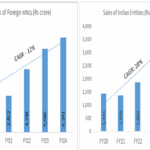New Delhi, October 01, 2021:
On the occasion of World Heart Day, leading public health experts and women doctors called for immediate policy interventions to prevent a hypertension epidemic in India. In a webinar organized by the Family Planning Association of India, the experts highlighted that hypertension is disproportionately affecting women in India due to the numerous socio-cultural and economic factors which limit their access to diagnostic facilities and timely treatment.
Eminent speakers at the event included Dr. Sanghamitra Ghosh (Secretary General, IPHA, Kolkata), Dr. Rathnamala Desai (President, FPA India), Dr. Daksha Shah (Deputy Executive Health Officer, MCGM), Dr. Kalpana Apte (Secretary General, FPA India) and Dr. Ajit Menon (Interventional Cardiologist, Mumbai). They discussed the growing problem of hypertension, how it could be addressed, why women did not avail treatment, what measures could be employed to enable them to do so and ways to ensure treatment adherence.
According to the WHO, 63% Indians suffer from non-communicable diseases of which 27% can be attributed to cardiovascular ailments. Hypertension continues to be the main reason behind cardiac diseases in India, yet there is a lack of awareness around it, an absence of appropriate primary care and poor follow up. One in five women (aged 15–49 years) in India suffer from hypertension but remain undiagnosed. Hypertension causes the walls of the blood vessels to thicken affecting the blood flow to the heart. It also causes cholesterol deposits in the arteries, increasing the chance of stroke.
Dr. Sanghamitra Ghosh, Secretary General, IPHA, Kolkata highlighted those complications arising from hypertension include impaired fetal growth, low birth weight, pre-eclampsia and other hypertensive disorders which cause maternal, fetal, and neonatal morbidity, and mortality[1]. Hypertension may cause symptoms in younger and middle-aged women that are often mistaken for ‘stress’ or ‘menopause-related’, resulting in neglect and becoming a risk factor for underlying diseases. Women may have a higher susceptibility to develop hypertension after menopause, due to the reduction in the levels of the cardio-protective hormone estrogen.
Speaking on the occasion, Dr Kalpana Apte, Secretary General, FPA India said, “A preliminary review of data around the prevalence and care cascade of hypertension in India has revealed that women are at an increased risk of hypertension especially beyond their reproductive years, as compared to men, and they are also sub-optimally treated. Women are more likely than men to be subject to health disparities that arise from sociocultural factors and socioeconomic and political contexts. Gender discrimination, socioeconomic burden, and constraints on physical mobility often limit women’s access to optimal health care. This webinar provided an opportunity to engage with experts on the data and program gaps that can impact the effective implementation of gender-equitable hypertension control programs in India”.
“The key agenda of our advocacy efforts is to identify research gaps and design policy and programs so that specific needs of women, during and beyond their reproductive years, are addressed. CVDs are higher among women (38%) than men (31%) and therefore it is imperative to implement programs which can control hypertension in women specifically, as the condition has a far-reaching impact on their health, well-being, and role in society” said Dr Rathnamala Desai, President FPA India.
“Hypertension affects almost 24% of the population of the world and is one of the major risk factors for various cardio-vascular diseases and complications. Women often have hypertension which remains undiagnosed and undertreated and have a higher risk of complications. There is a lot of sex and gender-based as well as rural versus urban divide and inequalities in the diagnosis and management of hypertension, especially in women” said Dr Aijt Menon, leading interventional cardiologist from Mumbai.
Dr Daksha Shah, Deputy Executive Health Officer, MCGM said, “Considering the alarming NCD mortality statistics of the country and the city, we need to prioritize budget and HR allocation for NCDs, especially focusing on women’s participation in the program. Also evolve models of care involving private sector and community organizations. Enhance women’s sensitization and awareness for early screening, give importance to her healthy food choices for the family and regular exercise”.
According to the WHO, non-communicable diseases are the leading cause of death worldwide, accounting for 60% of all deaths globally. A staggering 35 million people die every year from these silent killers, of which 18 million are women. NCDs represent the biggest threat to women’s health worldwide, increasingly impacting on women in developing countries in their most productive years. Therefore, it is important to prioritize hypertension treatment.
Control of hypertension requires a strategic approach that begins with policy level support for effective program implementation, standardization of treatment protocols, deployment of trained human resources and monitoring mechanisms across all tiers of the health system, inter-sectoral linkages and synergies between ongoing programs, enhanced skills of people to prevent and self-manage chronic disease, partnerships of stakeholders, information systems to track the impact of interventions and identify care ‘gaps’.
With this context, Prioritizing Advocacy for Control of Hypertension in India (PrACHI) is a collaboration between development partners FPA India and GHAI to reach out to key influencers for effective implementation of policies and programs to reduce the prevalence of hypertension in India by 25% by the year 2025. The advocacy efforts will be centered around effective implementation of and convergence between national programs and schemes that are either fully committed to hypertension prevention and management or include this strategic component, as a part of a broader program. On-ground synergies between vertical programs; larger allocation of resources (or resource pooling) and public-private partnership for effective implementation and monitoring will be the critical asks.
healthysoch







